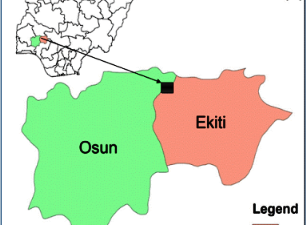New guide outlines a five-step roadmap to integrate small business and trade perspectives into nationally determined contributions, to align climate and economic agendas and advance a just transition.
Small, and medium-sized enterprises (SMEs) drive innovation, employment and resilience across global and local economies. Yet when it comes to climate policy, they are usually left out of the conversation.
SMEs and national climate policy
A new guide from the International Trade Centre (ITC), released ahead of the United Nations Climate Change Conference in Belém, Brazil, outlines how countries can change that.
Aligning Small Business and Trade with Nationally Determined Contributions: A Guide for Policymakers and Stakeholders offers a practical five-step roadmap to help governments integrate SME and trade perspectives into their nationally determined contributions (NDCs) – their official climate commitments under the Paris Agreement. Drawing on global best practices, the publication provides tools for early stakeholder engagement, coherent policy design and practical financing strategies.
About 90% of businesses worldwide are SMEs. Despite their vulnerability to climate shocks and their contribution to emissions, they are rarely acknowledged in national climate plans. As countries submit a new round of NDCs under the Paris Agreement (NDCs 3.0), incorporating SMEs and trade offers a timely opportunity to raise climate ambition while strengthening economic resilience – advancing the global goal of limiting warming to below 1.5°C.
This latest round of NDCs calls for more ambitious targets to reduce emissions, across all sectors of the economy, while also addressing the global energy transition, forests and adaptation goals.
‘These NDCs 3.0 are the first big test of whether countries have taken the lessons of the Paris Agreement’s first Global Stocktake to heart,’ said ITC Executive Director Pamela Coke-Hamilton. ‘If they are to succeed, they have to make a much stronger link between economic activity and environmental action. That means these climate plans must incorporate small businesses into their very design, as they are the drivers of the global economy.’
Five steps to embed SMEs in national climate strategies
Governments start by identifying strategic sectors where SMEs and trade can drive climate action, aligning national priorities with local economic realities. Integrating SMEs into climate policy also involves robust governance and financing – anchored in clear coordination mechanisms and a diverse mix of public and private funding sources, according to the report.
Stakeholder mapping ensures inclusive engagement, bringing SMEs and support organizations into the policy process. Through the design and planning processes, measures are shaped with input from those on the ground.
Implementation follows, backed by dedicated resources and measures to ease adoption, including regulatory support and incentives. Continuous monitoring and evaluation ensure that strategies remain responsive and effective, allowing for stakeholder feedback and policy learning.
Supporting all these efforts are capacity-building platforms and self-assessment tools, which help stakeholders clarify their roles and share best practices. These mechanisms ensure that SMEs are not only included but empowered to lead and innovate in the green transition.
By embedding SME and trade dimensions at each step, countries can strengthen their NDCs and accelerate a just transition – especially in developing economies where small firms are central to livelihoods, resilience and local innovation.


















